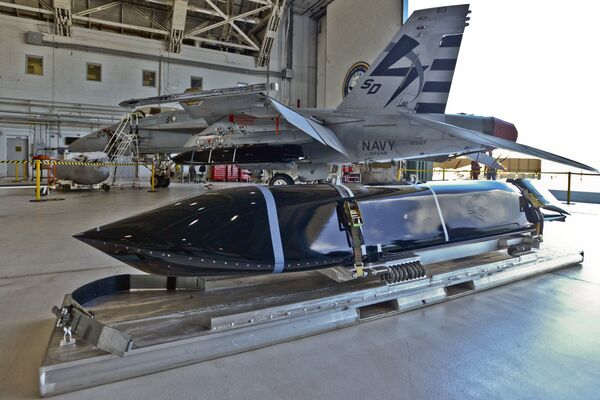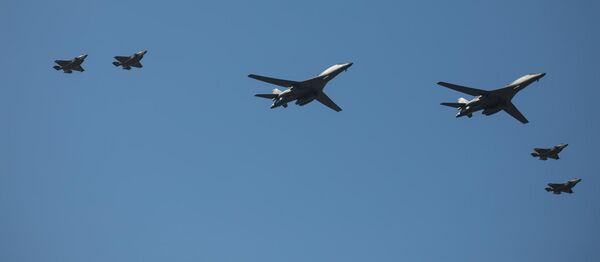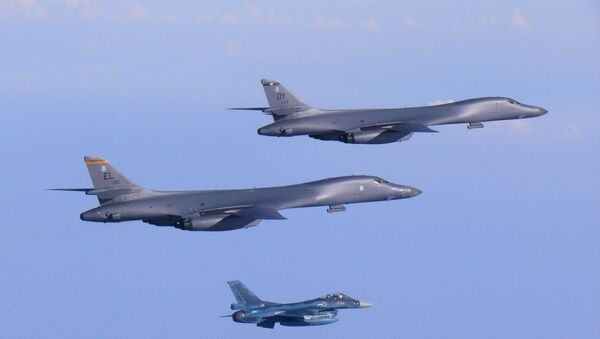Now that Rockwell’s B-1B Lancer can carry many of the Pentagon’s new missiles, the plane is finding a third life with the Air Force as a tool for naval power projection in the Pacific Ocean, where the US has positioned itself to confront the rise of China as a naval power and regional political player.
Maj. Gen. Jim Dawkins Jr., commander of the Eighth Air Force and the Joint-Global Strike Operations Center, told Military.com earlier this week the "nice thing about the B-1” is it can carry the Long-Range Anti-Ship Missile (LRASM), “and that's perfectly suited for the Pacific theater.”
"Not only are we resetting the airplane's mission-capability rates and the training done for the aircraft, we're also resetting how we employ the airplane to get more toward great power competition to align with the National Defense Strategy," he added.
The Lancer’s lifting capacity is enormous at 50,000 pounds, enabling it, with a few modifications, to carry 40 missiles or specifically 31 hypersonic missiles, which travel at speeds of over Mach 5.

The Lancer has been certified to carry the LRASM since 2018, when the Air Force demonstrated the plane could carry up to 24 of them at a time. The missile has a purported range of 230 miles (370 kilometers), significantly further than the new extended-range AGM-84 Harpoon, which can reach 194 miles under ideal circumstances.
Especially in the western Pacific and the South China Sea, that kind of range is important, as the Pentagon foresees a conflict with China that will largely play out on the high seas. Not only has the People’s Liberation Army (PLA) Navy already outsized the US Navy with plans to grow even larger, but the PLA has sunk decades of effort into developing a slew of ultra-long-range missiles designed to force US naval forces to remain far out to sea and away from the Chinese mainland - or any island where the missiles might be mounted.
While in recent months several Lancers have been dispatched for surprise flights to the region from US air bases in South Dakota and Texas, the Air Force has also positioned four Lancers on Guam in the Philippine Sea. It’s also been dispatching the planes to Europe, sending them to drill in Estonia and, more recently, Sweden.

Dawkins told Military.com the Air Force wants the Lancer “to be the roving linebacker, if you will, particularly in the Pacific.”
As Sputnik has reported, the Air Force’s aging fleet of 61 Lancer bombers has suffered serious readiness issues, as heavy wear from years of misuse as a close air support aircraft has caused it to break down at astonishing rates. Now, the service is planning on retiring 17 of the worst-off planes and repurposing the rest as carriers of long-range missiles.
The Lancer was born of the Cold War with the Soviet Union, designed in the 1970s to sprint into Soviet territory at ultra-low altitudes and deliver a nuclear strike. However, after the end of the Cold War and the involvement of the US in several irregular wars against insurgent groups in Iraq, Afghanistan and Syria, the Lancers and their huge carrying capacities were repurposed as ground attack aircraft, loitering over battlefields for hours, waiting to strike an enemy force when it appeared.
It seems their final act will be slow maritime patrols over the Pacific, before the arrival of the new B-21 Raider stealth bomber in 2025 signals their phasing out from service entirely.


